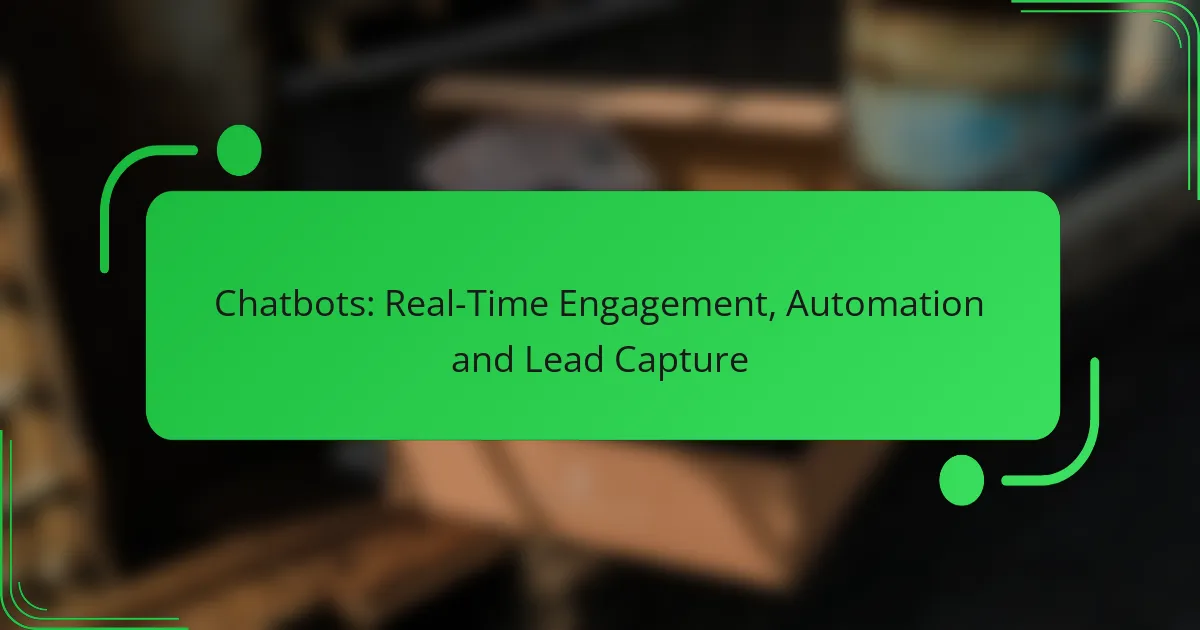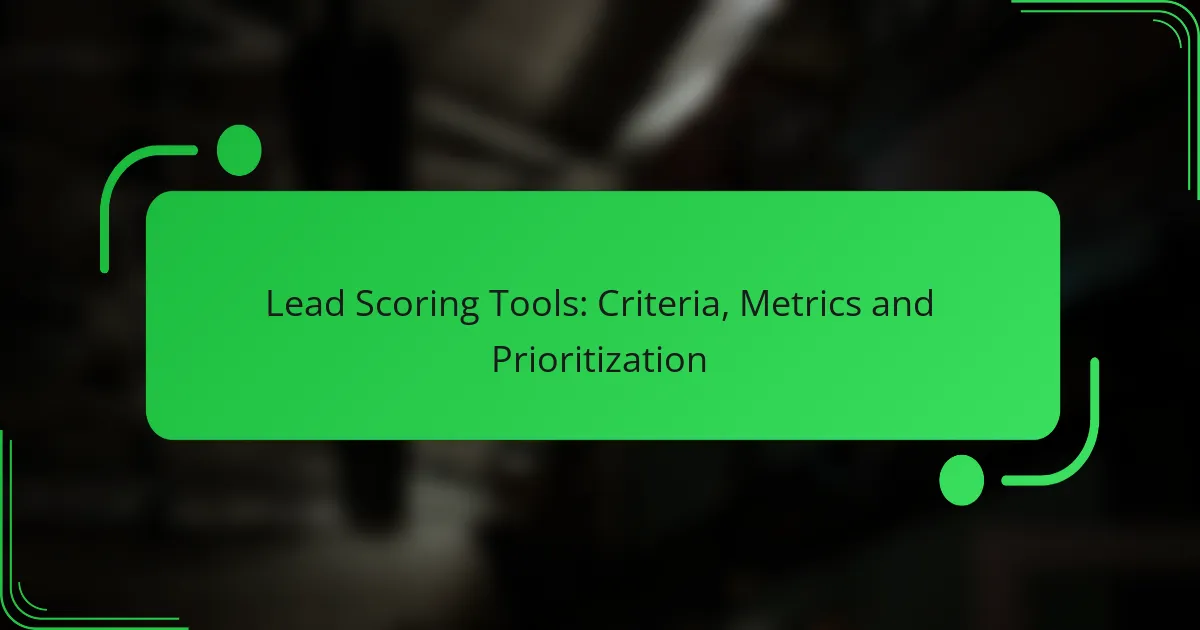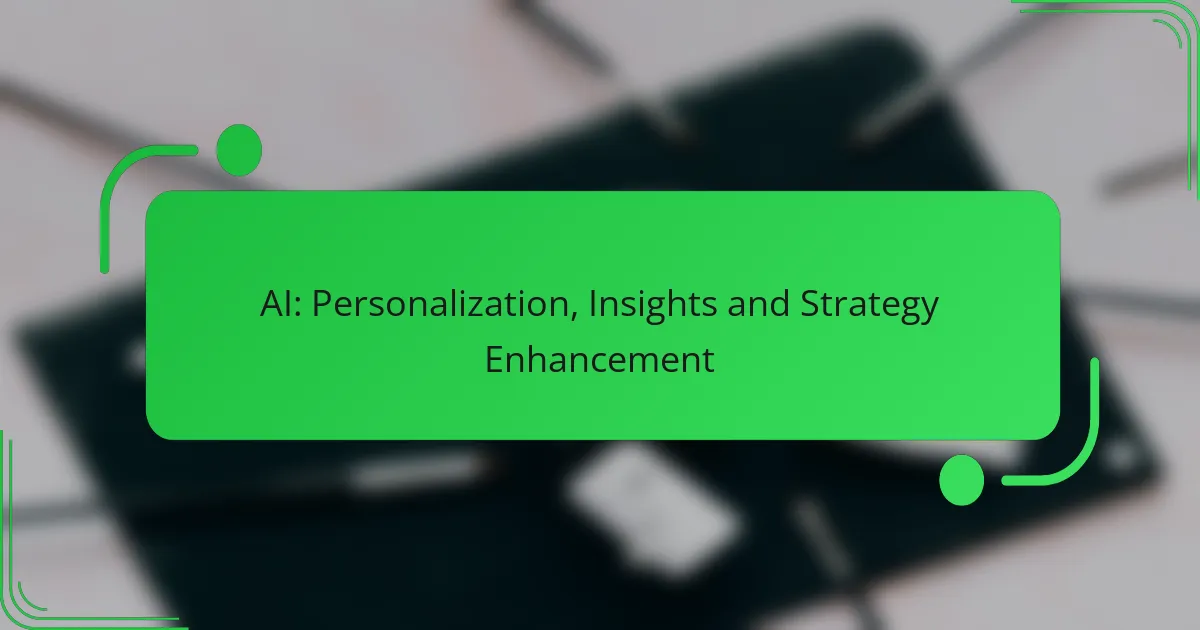Chatbots are revolutionizing customer engagement by delivering immediate responses to inquiries, which boosts user satisfaction and retention. By automating interactions, they enable businesses to efficiently connect with users, enhancing lead capture and streamlining operations for improved conversions and loyalty.
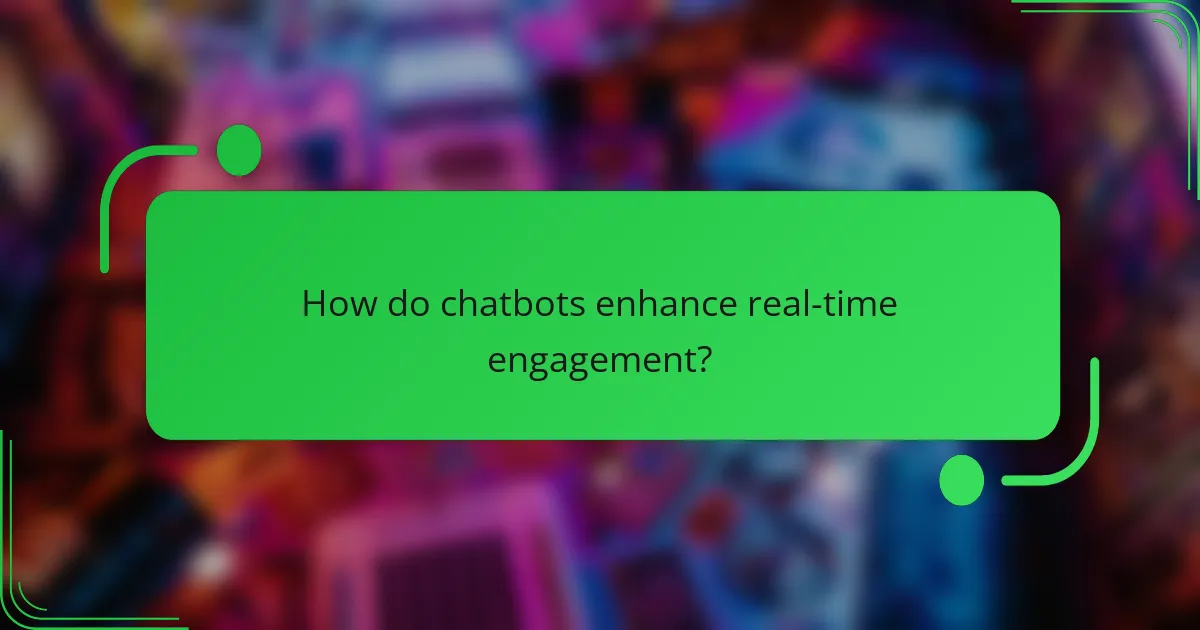
How do chatbots enhance real-time engagement?
Chatbots significantly enhance real-time engagement by providing immediate responses to customer inquiries, thereby improving user satisfaction and retention. They automate interactions, allowing businesses to connect with users efficiently and effectively, which can lead to increased conversions and loyalty.
Instant customer support
Chatbots offer instant customer support by addressing common queries and issues without delay. This immediacy reduces wait times, which is crucial in maintaining customer satisfaction. For instance, a chatbot can resolve frequently asked questions about product availability or shipping details within seconds.
To maximize effectiveness, ensure your chatbot is programmed with a comprehensive FAQ database. Regularly update this information to reflect current offerings and policies, helping to keep responses accurate and relevant.
Personalized user experiences
Chatbots can create personalized user experiences by utilizing data from previous interactions and user profiles. By analyzing customer behavior, they can recommend products or services tailored to individual preferences, enhancing engagement. For example, a chatbot might suggest items based on past purchases or browsing history.
To improve personalization, integrate your chatbot with customer relationship management (CRM) systems. This allows for a more seamless flow of information, enabling the chatbot to provide contextually relevant suggestions and responses.
24/7 availability
One of the key advantages of chatbots is their 24/7 availability, ensuring that customers can receive assistance at any time. This constant accessibility is particularly beneficial for businesses with a global customer base, as it accommodates different time zones and schedules.
Implementing a chatbot can significantly reduce the need for round-the-clock human staffing, leading to cost savings. However, ensure that the chatbot is capable of escalating complex issues to human agents during peak times or when necessary, maintaining a high level of service quality.
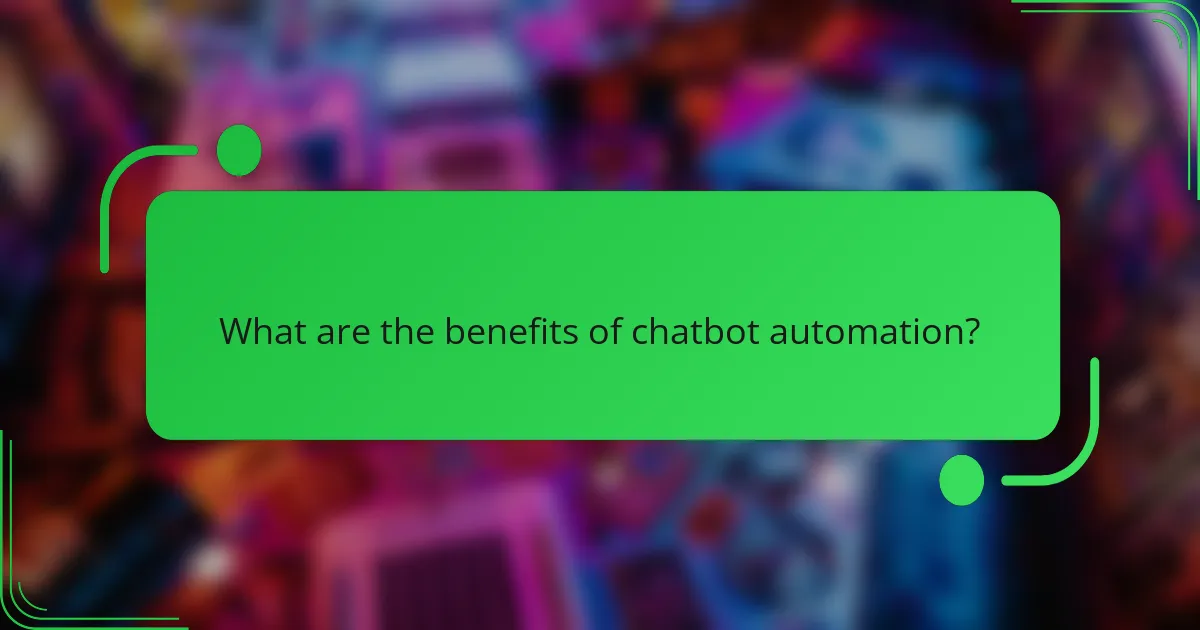
What are the benefits of chatbot automation?
Chatbot automation offers significant advantages, including enhanced customer engagement, efficient lead capture, and streamlined operations. By utilizing chatbots, businesses can provide real-time assistance, reduce response times, and improve overall user experience.
Increased efficiency
Chatbot automation increases efficiency by handling multiple inquiries simultaneously, allowing businesses to respond to customers without delay. This capability minimizes the need for human intervention in routine tasks, freeing up staff to focus on more complex issues.
For example, a chatbot can manage FAQs, appointment scheduling, and basic troubleshooting, significantly reducing the time spent on these tasks. This leads to quicker resolutions and higher customer satisfaction.
Cost reduction
Implementing chatbot automation can lead to substantial cost reductions for businesses. By decreasing the reliance on customer service representatives for basic inquiries, companies can lower labor costs and improve resource allocation.
In many cases, businesses report savings of up to 30% on customer service expenses after deploying chatbots. This allows for reinvestment in other areas, such as product development or marketing.
Streamlined workflows
Chatbots help streamline workflows by integrating with existing systems and automating repetitive tasks. This integration ensures that data flows smoothly between platforms, reducing manual input and the potential for errors.
For instance, a chatbot can automatically log customer interactions into a CRM system, ensuring that all team members have access to up-to-date information. This not only enhances collaboration but also improves decision-making across the organization.
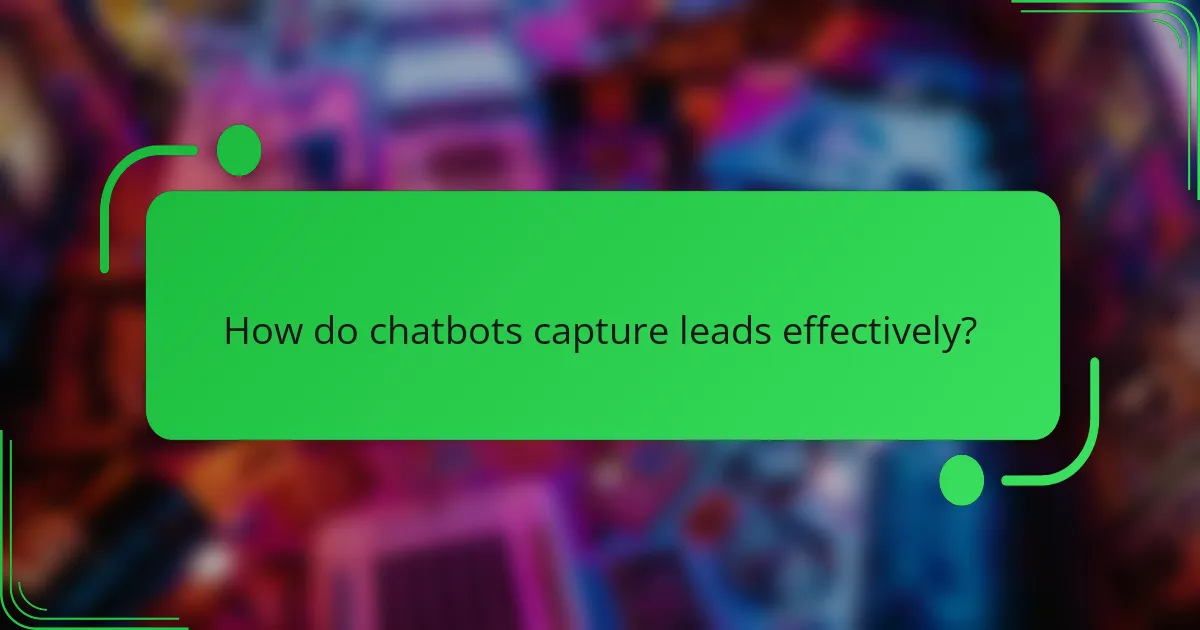
How do chatbots capture leads effectively?
Chatbots capture leads effectively by engaging users in real-time conversations, collecting valuable information, and automating follow-up processes. This allows businesses to streamline their lead generation efforts and enhance customer interactions.
Data collection through interactions
Chatbots gather data by engaging users in conversations, asking relevant questions, and prompting them to provide information such as their name, email, and preferences. These interactions can occur on websites, social media platforms, or messaging apps, making it easy for potential leads to share their details.
For example, a chatbot on a retail website might ask visitors about their shopping interests, which helps tailor future communications. This data collection is often done in a conversational manner, making it feel less intrusive.
Integration with CRM systems
Integrating chatbots with Customer Relationship Management (CRM) systems is crucial for effective lead capture. This integration allows collected data to be automatically transferred to the CRM, ensuring that leads are organized and easily accessible for follow-up.
Popular CRM platforms like Salesforce or HubSpot offer tools that facilitate seamless integration with chatbots. This means that as soon as a lead interacts with the chatbot, their information is logged in the CRM, enabling sales teams to act quickly.
Qualifying leads automatically
Chatbots can automatically qualify leads by asking targeted questions that assess the potential customer’s interest and readiness to purchase. By analyzing responses, chatbots can categorize leads into different segments, such as hot, warm, or cold.
For instance, a chatbot might inquire about a user’s budget or timeline for a purchase. Based on the answers, it can prioritize leads that are more likely to convert, allowing sales teams to focus their efforts effectively.
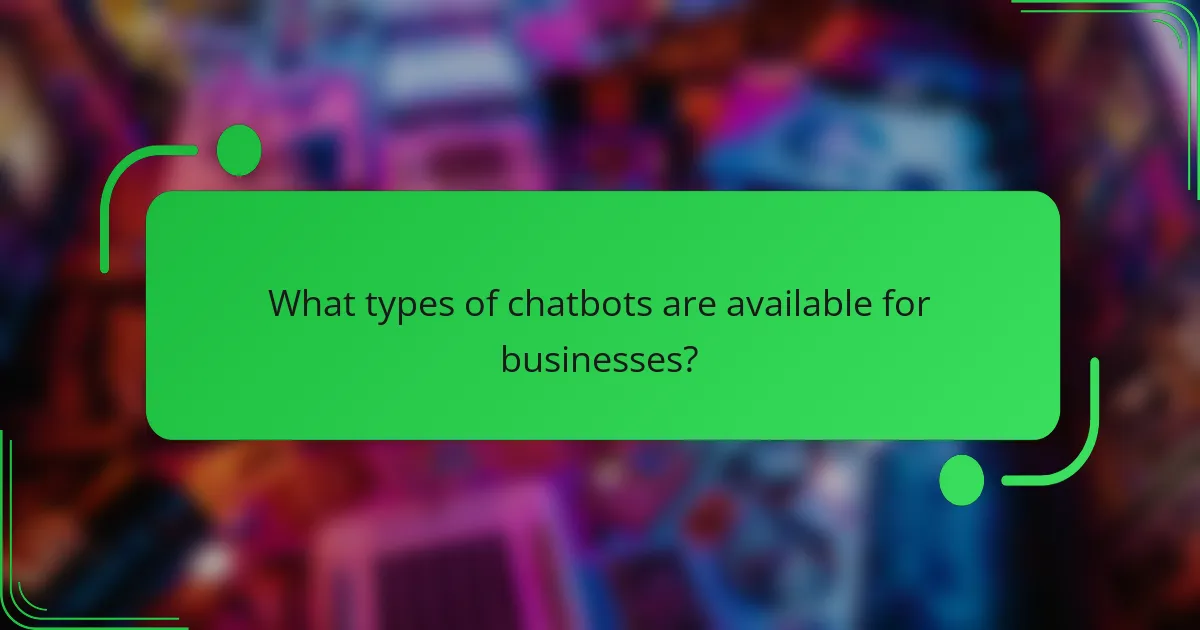
What types of chatbots are available for businesses?
Businesses can choose from three primary types of chatbots: rule-based, AI-driven, and hybrid chatbots. Each type offers unique functionalities and benefits, making them suitable for different engagement and automation needs.
Rule-based chatbots
Rule-based chatbots operate on predefined scripts and rules, responding to specific keywords or phrases. They are straightforward to implement and are best suited for handling simple queries, such as FAQs or basic customer service tasks.
While rule-based chatbots can efficiently manage repetitive inquiries, they lack the ability to understand context or learn from interactions. Businesses should consider using them for straightforward tasks where complex conversation is not required.
AI-driven chatbots
AI-driven chatbots utilize natural language processing (NLP) and machine learning to understand and respond to user queries more intelligently. They can learn from past interactions, making them capable of handling more complex conversations and providing personalized responses.
These chatbots are ideal for businesses looking to enhance customer engagement and automate lead capture. However, they require more resources for development and ongoing training to maintain effectiveness. Companies should weigh the investment against the potential for improved customer satisfaction.
Hybrid chatbots
Hybrid chatbots combine the features of both rule-based and AI-driven chatbots, allowing for a more versatile approach to customer interaction. They can handle simple queries using predefined rules while also employing AI for more complex conversations.
This type of chatbot is beneficial for businesses that want to provide immediate responses for common questions while still having the capability to manage intricate inquiries. Implementing a hybrid model can help balance efficiency and customer experience, making it a popular choice for many organizations.
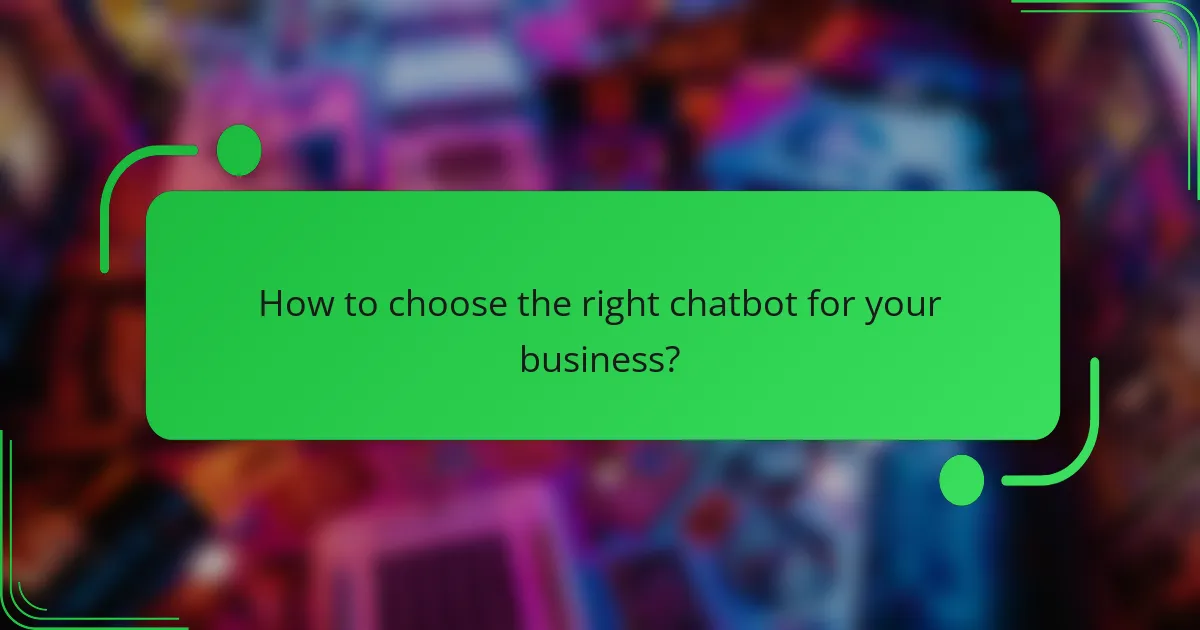
How to choose the right chatbot for your business?
Selecting the right chatbot for your business involves understanding your specific needs, ensuring compatibility with existing systems, and prioritizing user experience. A well-chosen chatbot can enhance real-time engagement, automate tasks, and effectively capture leads.
Identify business needs
Start by clearly defining what you want the chatbot to achieve. Consider whether you need it for customer support, lead generation, or sales assistance. For instance, a chatbot focused on lead capture might require integration with your CRM system.
List the key functionalities you expect, such as 24/7 availability, multilingual support, or the ability to handle complex queries. This will help narrow down your options and ensure the chatbot aligns with your business objectives.
Evaluate integration capabilities
Assess how well the chatbot can integrate with your existing platforms, such as your website, social media, or email marketing tools. A chatbot that seamlessly connects with these systems can streamline operations and improve data flow.
Look for chatbots that offer APIs or pre-built integrations with popular software like Salesforce, HubSpot, or Shopify. This can save time and reduce the complexity of implementation.
Assess user experience design
The design of the chatbot’s interface is crucial for user engagement. Ensure it provides a clear, intuitive experience that guides users through interactions without confusion. A well-designed chatbot can significantly enhance customer satisfaction.
Consider the tone and personality of the chatbot as well. It should reflect your brand voice and be capable of handling user queries in a friendly and efficient manner. Testing the chatbot with real users can provide valuable feedback on its usability and effectiveness.
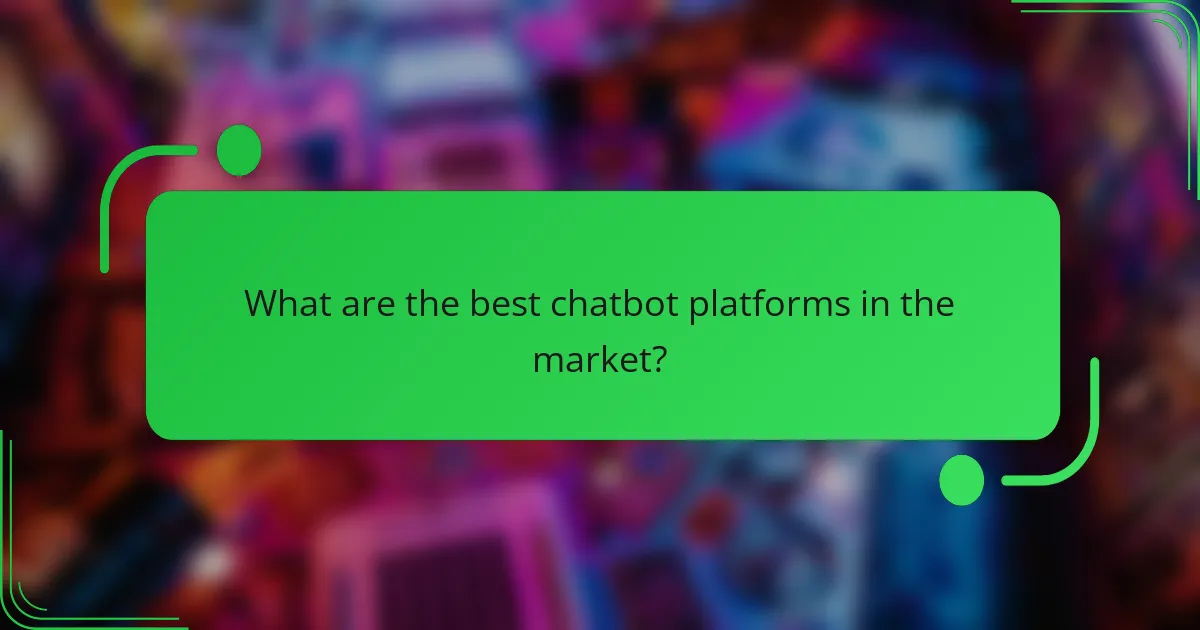
What are the best chatbot platforms in the market?
The best chatbot platforms offer a mix of real-time engagement, automation, and lead capture features. Key players in this space include Intercom and Drift, each providing unique functionalities tailored to different business needs.
Intercom
Intercom is known for its user-friendly interface and robust features that facilitate customer communication. It allows businesses to engage users through targeted messages, live chat, and automated responses, making it ideal for real-time engagement.
One of Intercom’s standout features is its ability to segment users based on behavior, enabling personalized interactions. This can significantly enhance lead capture efforts by ensuring that the right messages reach the right audience at the right time.
Drift
Drift focuses on conversational marketing and sales, providing tools that help businesses engage visitors in real-time. Its chatbot can qualify leads, book meetings, and even integrate with CRM systems, streamlining the sales process.
A key advantage of Drift is its emphasis on live chat capabilities, allowing users to connect with sales representatives instantly. This immediacy can lead to higher conversion rates, making it a valuable tool for businesses looking to optimize lead capture.
